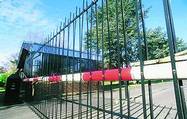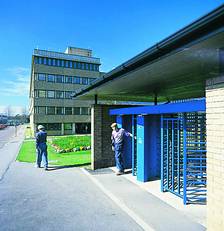

Many articles have been written over the past three years on the subject of system integration. Having fallen asleep or screwed up the editorial in a rage half way through most, I find myself actually writing one! I hope that I am able to bring an alternative perspective to the subject through personal, and again another confession, bitter/pleasureable experience in integrating many systems over the last seven years. Coming from a technical background, the aim of this article is to give a 'no frills' account of what is possible both technically and practicably.
What is an integrated system?
The security equipment market has woken up to the benefits of integrating the components within a security system, but not all manufacturers can offer true integration. Consequently, the word 'integrated' is much sort after but much abused. So what does it really mean?
Some people use the term 'integrated' to describe a multiplexer combining full screen and multi screen images. Or a control desk containing an integrated intruder alarm PC, an integrated fence alarm PC and an integrated CCTV PC sitting next to one another. This is not true integration.
A true integrated system will combine these components, but as part of a larger, more sophisticated system. You might combine access control, fire alarms, intruder alarms, fence alarms, CCTV, public address system, and paging all within one system. To single PC or multi-station networks. These systems may be from differing manufacturers, they may be existing or new.
These individual components must interact with each other as one entity. For example, when a fire alarm is activated, the touch-screen VDU will display a text window to the operator giving full instruction on what to do. At the same time the system could automatically page staff, display the relevant CCTV cameras to view the area, release fire exit doors and the system will open a direct speech-path to the incident area, allowing the operator to communicate with staff, without having to manually select a public address system.
How to integrate systems
Systems can be integrated in many different ways dependant on the equipment and on the level of security required.
The easiest method of integration is by the use of voltage free inputs/outputs. One of the most reliable methods of achieving this is by the use on an RS485 I/O network(s) that can be transmitted up to 1 km or over fibre for the longer distances. This method is relatively competitive and can combine many different signals from various systems on one network.
Serial connection to a computer is by far the most common way of communicating with OEM (original equipment manufacturer) equipment. This method is fast, reliable and much more flexible than I/O. Information can be passed between OEM equipment and the system integrator with hand shaking (in many cases) to ensure that the alarm has been received. Whenever protocols have to be forthcoming from OEM(s), in my experience this has not been an issue, but some manufacturers are very cautious to whom they release this information. If you are a competitor it is almost impossible.
Even when protocol has been received 90% of the time it is either incorrect, incomplete or even misleading! It is essential to test product before installation, I know it is an old fashioned idea but it is really nice to see the system actually working.
If a higher security application is required, one must consider the use of serial hubs before using a server-based system. Servers are great, you can use dual mirrored hard drives, dual power supplies etc. But what happens when a surge occurs and destroys your multi-port serial card, serial connections do not like being switched and how does the software know where to address the information?
Serial to Ethernet converters
In theory it appears as if all these options are possible to achieve (no matter how difficult) but the practical side of dealing with 'on line' equipment via serial connections and server technology makes this complex in the extreme. Therefore, why not use the simpler option - serial to Ethernet converters?
Fast, reliable, easily replaced, low cost and they communicate with more than one computer to achieve transparent hot reserve (ie if one PC fails another takes over transparently but with a warning telling the operator to call the maintenance contractor). If one serial link causes a problem then only one OEM system is affected and the remainder of the integrated package remains intact.
One should always look for the simplest method of achieving integration that complies with the system requirements. Someone has to maintain these systems and others have to work with them. Faults need to be resolved quickly and easily keeping systems simple helps!
So what are the benefits?
Benefits are only achieved when the system has been designed properly. The most important element to any system no matter how complex or well designed is the ease of operation. One must consider who is actually going to be using the system. If the system is too complex or if it difficult to use or even if you can open boxes on boxes it will never work the operators will see to that!
The system must think for the operator and present information to them when required. This information must be clear and precise instructing the operators/security officers to carry out the necessary actions for any one scenario. The more actions the system can action automatically the better - no one works well under stressful conditions. If the operator knows that the system has reacted they can concentrate on their own task therefore reducing the stress factor.

When a system has been designed well, efficiency is improved dramatically. Reducing losses, damage, vandalism, cleaning costs, void offices/dwellings and man hours lost due to injury to staff represent some of the ways cost savings can be achieved. Sometimes a reduction in staffing levels (the most obvious cost saving) is not the best way. Tackling the problem must come first and can even pay for itself. Having an effective and efficient backup can be crucial, dispatching staff immediately to the breach in security.
One can liken a good integrated system to a rugby team. If you could pick the ideal team from around the world, each player would be outstanding in there own right, they would bring a unique element onto the field. Individually they are superior in their field but put together as a team, interacting with one another, the effective enhancement is too difficult to quantify.
Pitfalls
The easiest mistake for an engineer to make is designing a system that becomes too difficult for an operator to use. Do not introduce systems that are of no practical benefit to the security system.
For example using a BMS (building management system) to give an input on an alarm such as a boiler failure is of benefit. But to allow the operator to control the temperature of the water in the swimming pool is complex and has no real benefit. Do not use the system just because it is there.
Each system must work independently and must not be reliant on the integrated control system. Keyboards, panels, controllers must be available – no system is 100% foolproof.
Total cost of ownership
Perhaps one of the hidden areas is the cost of expansion in the future. This can double or even triple the initial system costs. The client must be fully aware of the overall costs for their project, including costs for future system expansion. Also detailed performance specification should be written or obtained for any 'special' items or bespoke operation.
This is time consuming but crucial to have clarification in writing before commencement of the project. It is so often expressed by clients, 'That is not what I wanted or even asked for'. Clarification is essential, as interpretation can occur on different levels.
The key to any successful project is planning at all stages and co-operation from all parties. Confirmed information is essential as is pre-testing before delivery onto site.

© Technews Publishing (Pty) Ltd. | All Rights Reserved.